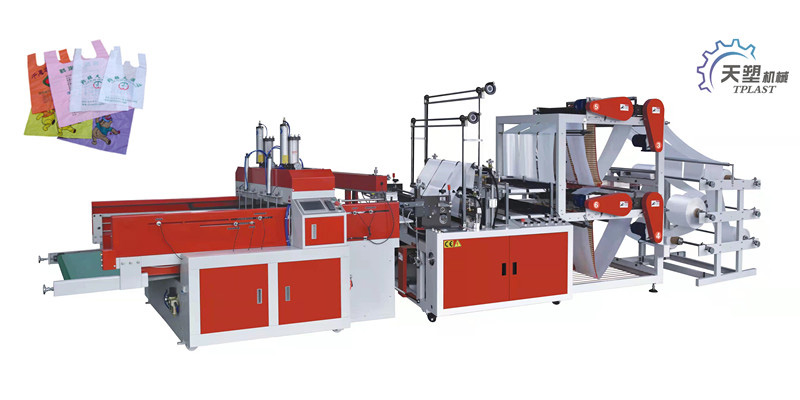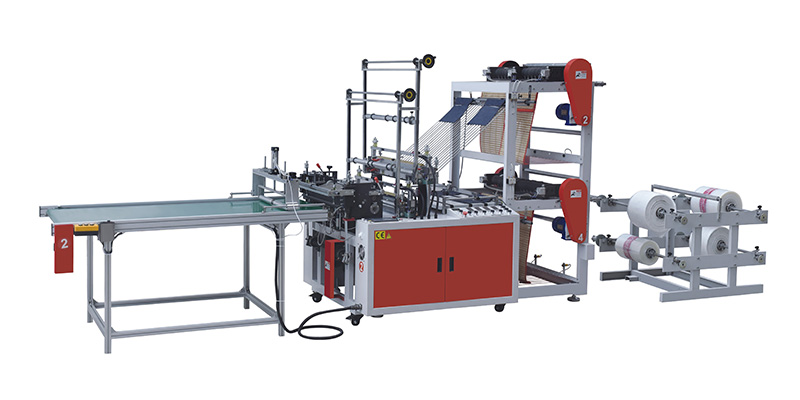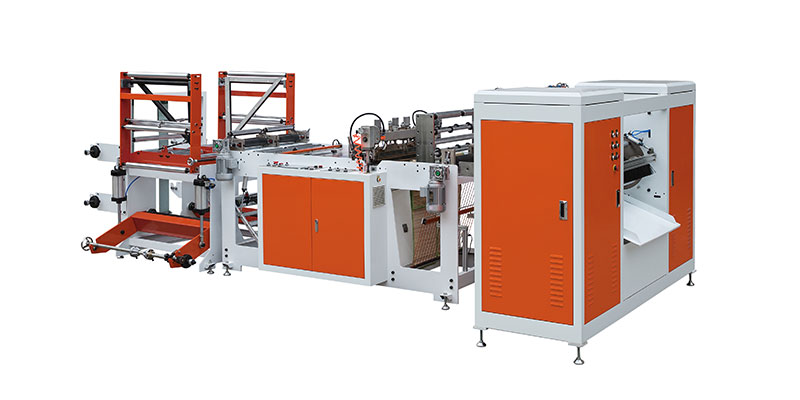Can You Recycle Garbage Bags?
In an era marked by growing environmental awareness and the urgent need to reduce landfill waste, the question of whether garbage bags can be recycled has become increasingly relevant. Garbage bags are a common household item, and their disposal has significant implications for the environment. While the idea of recycling them seems like an eco - friendly solution, the reality is more complex. This article will delve into the various aspects of garbage bag recycling, including the types of materials used, the recycling process, the challenges involved, and what individuals can do to contribute to a more sustainable waste management system. Additionally, we'll explore how the bag - making process intersects with recycling efforts.
The Significance of Recycling Garbage Bags
Recycling garbage bags, if possible, offers several environmental benefits. First and foremost, it helps conserve valuable resources. Most garbage bags are made from plastic, and producing plastic requires crude oil, a non - renewable resource. By recycling these bags, we can reduce the demand for new plastic production, thereby conserving energy and reducing greenhouse gas emissions associated with oil extraction and refining.
Secondly, recycling garbage bags can significantly reduce the amount of waste sent to landfills. Landfills are a major source of environmental pollution, as they produce methane, a potent greenhouse gas that contributes to climate change. When plastic garbage bags decompose in landfills, they take hundreds of years to break down, occupying valuable space and posing risks to wildlife that may ingest or become entangled in the plastic. Recycling diverts this waste from landfills, helping to extend the lifespan of these facilities and mitigate their environmental impact.
Types of Garbage Bags and Their Recyclability
Plastic Garbage Bags
The majority of garbage bags on the market are made from plastic, and the recyclability of these bags depends on the type of plastic they are composed of. The most common types of plastic used in garbage bags are polyethylene (PE), which is further divided into high - density polyethylene (HDPE) and low - density polyethylene (LDPE).
In the bag - making process, HDPE, known for its strength and durability, is often melted and extruded into thicker, more heavy - duty garbage bags through specialized machinery. Although it is generally recyclable, the recycling process can be challenging due to the potential for contamination. During use, garbage bags often contain food scraps, liquids, and other debris, which can contaminate the recycling stream and make it difficult to process the plastic. When these used bags are returned for recycling, the initial step in the recycling process is similar to the cleaning stage in bag making - removing contaminants. However, in recycling, this is even more crucial as any leftover debris can damage the recycling equipment and reduce the quality of the recycled plastic.
LDPE, on the other hand, is more flexible and is used in thinner, lighter - weight garbage bags. In bag manufacturing, LDPE is processed in a way that allows it to form softer and more pliable bags. While LDPE is also recyclable in theory, it faces similar contamination issues as HDPE. In many recycling facilities, plastic garbage bags are not accepted in curbside recycling programs because of the high risk of contamination. Instead, they may need to be taken to specialized recycling centers that are equipped to handle plastic film and bags, where they will undergo a process that mirrors some aspects of the bag - making extrusion and shaping, but in reverse to break them down into reusable materials.
Biodegradable and Compostable Garbage Bags
In recent years, there has been a rise in the popularity of biodegradable and compostable garbage bags. These bags are designed to break down more quickly than traditional plastic bags, either through natural biological processes in a composting environment or under specific conditions. In the bag - making process for these types of bags, plant - based materials such as cornstarch or potato starch are used. Specialized manufacturing techniques are employed to transform these materials into bags, often involving processes like molding and shaping.
However, the term “biodegradable” can be misleading, as some bags may require specific industrial composting facilities to decompose properly, and may not break down in a regular landfill or home composting setup. Compostable garbage bags, on the other hand, are typically made from plant - based materials such as cornstarch or potato starch. They are designed to break down into organic matter in a composting environment. While these bags offer a more sustainable alternative, they are not always accepted in all recycling or composting programs. It's important to check with local waste management authorities to ensure that the specific type of compostable bag you are using can be properly disposed of in your area.

The Recycling Process for Garbage Bags
When garbage bags are accepted for recycling, they go through a series of steps to be transformed into new products. First, the bags are collected from recycling drop - off points or specialized collection programs. They are then transported to a recycling facility, where they are sorted based on their plastic type and quality. This sorting process is similar to the quality control stage in bag making, where different materials and grades are separated for appropriate processing.
Next, the sorted bags are cleaned to remove any contaminants. This is a crucial step, as even small amounts of food waste or other debris can affect the quality of the recycled plastic. After cleaning, the bags are shredded into small pieces, which are then melted down and formed into pellets. These pellets can be used as raw materials to produce new plastic products, such as more garbage bags, plastic films, or other plastic - based items. In essence, the recycling process takes the used bags and reverts them back to a state similar to the raw materials used in the initial bag - making process, allowing for the creation of new bags or other plastic goods.
Challenges in Recycling Garbage Bags
Despite the potential benefits of recycling garbage bags, there are several challenges that hinder the process. One of the biggest challenges is contamination. As mentioned earlier, garbage bags often contain food waste, liquids, and other debris, which can contaminate the recycling stream. This contamination can damage recycling equipment and reduce the quality of the recycled plastic, making it less valuable and more difficult to reuse. In the bag - making industry, strict quality control measures are in place to ensure the purity of materials going into production. However, once the bags are used, maintaining that purity becomes extremely difficult, highlighting the need for better waste separation and cleaning methods in the recycling process.
Another challenge is the lack of infrastructure for recycling plastic bags. Many recycling facilities are not equipped to handle plastic film and bags, and there are limited collection programs specifically for these items. This means that even if individuals want to recycle their garbage bags, they may not have a convenient way to do so. In contrast, the bag - making industry has a well - established infrastructure for manufacturing and distributing bags. Bridging this gap between bag making and recycling infrastructure is essential for improving the recyclability of garbage bags.
In addition, the cost of recycling garbage bags can be relatively high. The cleaning, sorting, and processing required to recycle plastic bags can be expensive, and in some cases, it may be more cost - effective to produce new plastic from virgin materials. The bag - making industry faces its own cost - related challenges, but the economies of scale in production often make it more cost - efficient. Finding ways to make the recycling process more cost - effective, perhaps by drawing inspiration from some of the manufacturing efficiencies in the bag - making industry, could help overcome this hurdle.
What Can Individuals Do?
While the challenges of recycling garbage bags are significant, there are steps that individuals can take to contribute to a more sustainable waste management system. First, it's important to reduce the use of garbage bags whenever possible. This can be done by using reusable containers for waste storage, composting food scraps instead of throwing them in the trash, and minimizing overall waste generation. By reducing the demand for new bags, we also indirectly reduce the burden on the recycling system.
When using garbage bags, choose ones that are made from recycled materials or are biodegradable or compostable, and make sure they are suitable for your local waste management options. If your area has a plastic bag recycling program, take the time to clean and prepare your garbage bags before recycling them to minimize contamination. Understanding the bag - making process and the importance of using high - quality, recyclable materials can help individuals make more informed choices when purchasing garbage bags.
Finally, advocate for better waste management policies and infrastructure in your community. Encourage local governments and waste management companies to invest in more comprehensive recycling programs that include plastic bags and other hard - to - recycle items. By raising awareness and taking action, individuals can play an important role in promoting the recycling of garbage bags and reducing the environmental impact of waste. This could involve lobbying for more investment in recycling facilities that are better equipped to handle the unique aspects of garbage bag recycling, similar to the specialized machinery used in bag making.
Conclusion
The question of whether you can recycle garbage bags does not have a simple yes or no answer. While it is possible to recycle many types of garbage bags, the process is complicated by factors such as contamination, lack of infrastructure, and cost. By understanding the different types of garbage bags, the recycling process, and the challenges involved, individuals can make more informed decisions about how to dispose of their waste in an environmentally friendly way. Moreover, recognizing the intersection between the bag - making process and recycling can offer new perspectives on how to improve both the production and recycling of garbage bags. With continued efforts from individuals, communities, and governments, it is possible to improve the recyclability of garbage bags and move towards a more sustainable future.

 English
English Français
Français Español
Español


